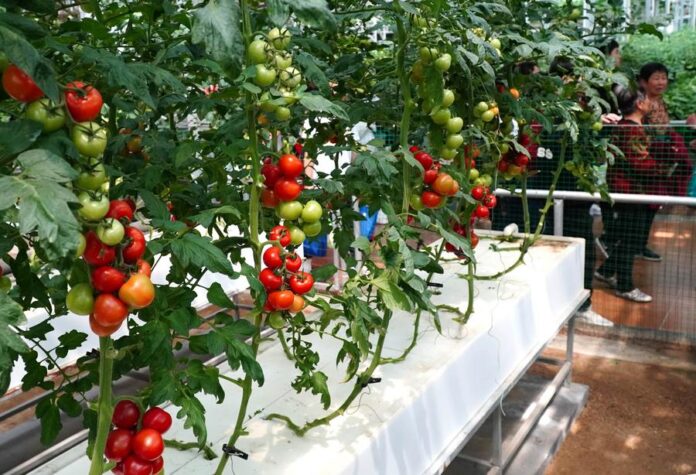JINAN: A diverse array of over 600 new vegetable varieties, including cucumbers, tomatoes, chilies, purple peppers and eggplants, are currently showcased at the 25th China (Shouguang) International Vegetable Sci-Tech Fair in the city of Shouguang in east China’s Shandong Province.
Many of these varieties have already hit the market and are available to ordinary consumers, as China’s advancements in vegetable technology are expanding the culinary horizons, offering more options for dining tables everywhere.
One particular highlight at the fair is a variety of “slimming cucumbers,” which has garnered significant attention. “It contains several times more propanol diacid than ordinary varieties, which helps inhibit the conversion of sugar into fat, and is thus called ‘slimming cucumber’,” said Xu Tiemin, deputy mayor of Shouguang and deputy director of the Shouguang vegetable research & development center, Chinese Academy of Agricultural Sciences.
Shouguang, one of China’s major vegetable production bases, has cultivated over 1,000 mu (about 66.7 hectares) of the new cucumber variety, with a yield of 10 tonnes per mu, according to Xu.
Over the past four decades, China has cultivated over 6,500 vegetable varieties, with many fine varieties undergoing four to five generations of upgrades, according to the Chinese Academy of Agricultural Sciences.
In Shouguang, the proportion of domestic vegetable seeds has increased to over 70 percent from 54 percent in 2010. “At present, solanum varieties cultivated in Shouguang are ahead of the international level in many aspects such as yield, taste, disease resistance, and cold hardiness,” said Liu Xinqing, president of Shandong Shouguang Vegetable Seed Industry Group.
The ongoing sci-tech fair also features more than 80 vegetable planting models and over 100 technologies, including rotary farming, tidal farming, aquaponics systems, vertical farming and space breeding.
In one exhibition hall, tomato plants are displayed growing with their roots exposed to the air, devoid of contact with water or soil. Sprayers atomize a nutrient solution, which is then directly sprayed onto the roots.
“Compared with traditional soil cultivation, aerosol planting can be more easily applied in vertical farming with automatic operations, which helps to reduce the incidence of diseases and pests while maximizing greenhouse space utilization,” said Ma Zunjuan, an exhibition hall worker at the fair.
In the same hall, several robots can be spotted moving back and forth in tomato fields. “They are pollinating the flowers with the help of technologies such as visual recognition and positioning and multi-sensor integrated navigation,” Ma explained.
In China, the extensive application of digital technologies in agriculture is helping transform and upgrade agricultural production, injecting new momentum into the modernization of farming and the countryside.
In Shouguang, digital technologies and intelligent equipment are widely used in vegetable greenhouses, with the application rate of the Internet of Things in new greenhouses exceeding 80 percent.






















